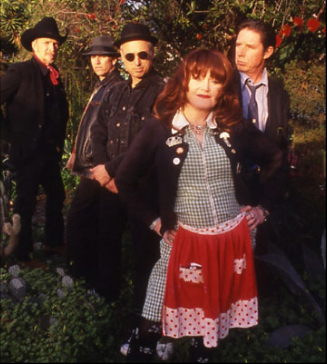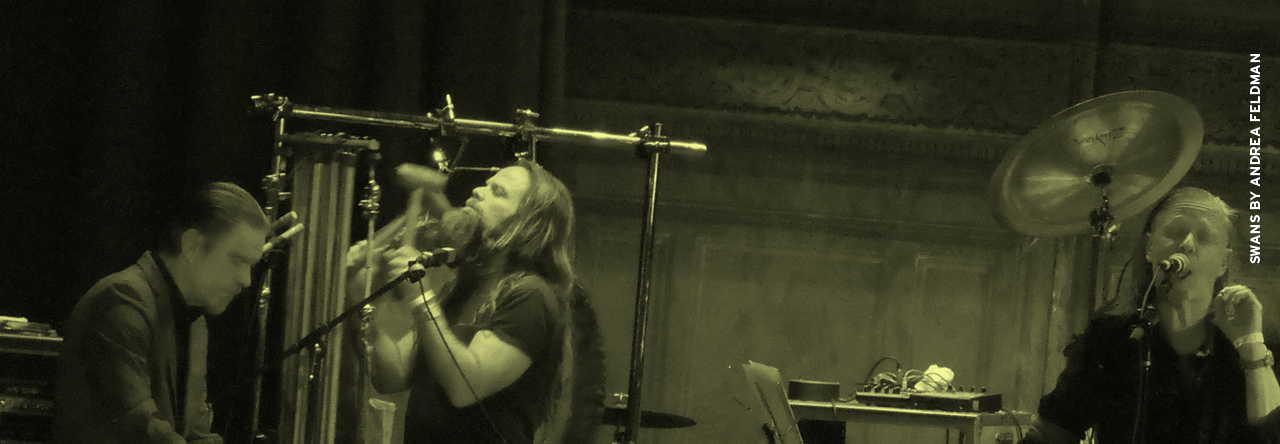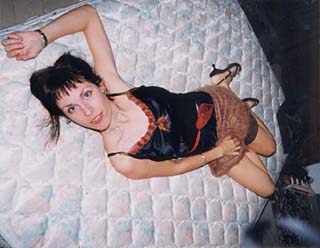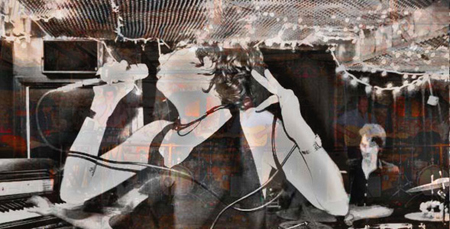The Knitters
The Modern Sounds of… the Knitters [Zoë/Rounder]
Live at The Paradise
Boston MA, 2005
 There are a few things you should know about the Knitters: they formed in 1982 as a side-project to the members’ primary bands (X and the Blasters) with the intention of playing only benefit shows. They released their first album, Poor Little Critter in the Road, in 1985; this year they finally released the follow-up, The Modern Sounds of the Knitters. The band is made up of three-quarters of X (namely, guitarist/singer John Doe, singer Exene Cervenka, and percussionist DJ Bonebrake), guitarist Dave Alvin (formerly of the Blasters, now solo), and stand-up bassist Jonny Ray Bartel (of Los Angeles group the Red Devils).
There are a few things you should know about the Knitters: they formed in 1982 as a side-project to the members’ primary bands (X and the Blasters) with the intention of playing only benefit shows. They released their first album, Poor Little Critter in the Road, in 1985; this year they finally released the follow-up, The Modern Sounds of the Knitters. The band is made up of three-quarters of X (namely, guitarist/singer John Doe, singer Exene Cervenka, and percussionist DJ Bonebrake), guitarist Dave Alvin (formerly of the Blasters, now solo), and stand-up bassist Jonny Ray Bartel (of Los Angeles group the Red Devils).
Watching The Decline of Western Civilization, Penelope Spheeris’ documentary of the nascent LA punk scene, recently, I was struck by the sheer aggressiveness of the scene that spawned them. And X gave back as good as they got, encapsulating the paranoia and decay of LA life with songs as narratively concise as Raymond Carver short stories.
The Knitters, on the other hand, put a different spin on similar themes. Even if some critics place the band firmly in the long shadow of X’s legend, I don’t think that’s something that concerns them overmuch. If anything, the joyful noise of the Knitters —an energizing mix of traditional ballads, rockabilly and bluegrass classics (they’d fit CBGB’s titular credo more than most bands who’ve actually played there, X included), and re-worked versions of X songs— refuses to trade in nostalgia. They don’t dwell in the past, nor do they peer especially far into the future. They’re firmly, blissfully rooted in the now. [cont’d]
Critter must have seemed decidedly anomalous back in 1985, even with a pedigree of bands who’d always stood out in the rather hegemonic LA musical landscape. Wedding rootsy, traditional influences (be it blues, rockabilly, bluegrass, or country) to the raw, blunt, stubbornly a-historical sound of punk was something new then. In the intervening years such plundering of the past has become practically de rigeur for bands finding their footing, but the Knitters —along with their peers the Gun Club, Alvin’s the Blasters, Los Lobos, Lone Justice, Rank and File, and (of course) X— were pioneers of alt.country, to coin the accepted but rather odious phrase.
OK, now that we’ve gotten that out of the way: none of this explains what makes the Knitters special. It’s an elusive combination of charisma, chemistry, and wit; what formed as a pick-up band, a casual aside to more pressing projects has slowly but surely come into its own. As Doe notes in the press release for Modern Sounds, “The Knitters, like their music, don’t do anything hasty.” But they docareful. and in the intervening years since their deliciously sloppy debut they’ve certainly struck the perfect balance between spit n’polish and spontaneity.
Live, they bring new meaning to the term “loose knit.” I mean it as high praise when I say that they’re the world’s greatest roadhouse pick-up band, but they kinda are. Somewhat more slapdash than David Johansen’s preservation project the Harry Smiths, any instinct towards building a new canon or dusting off slightly stale classics (Steppenwolf’s hell-raisin’ standard “Born to Be Wild” comes to mind) is out the window when the band get onstage and tear through their set with reckless, marvelously casual abandon, making each song wholly their own. It’s a glorious sight, vibrant and vital. Every time I’ve seen the Knitters they’ve torn the roof off the place with their sheer, restless exuberance —its gale-force is undeniable.
At the Paradise they kicked up their glorious, nervy skiffle for a good hour and a half, their energy never waning for a second.
The element of reclamation is central to the Knitters’ agenda, not that they would be so formal as to call it an “agenda” per se. breathing new life into fond but mostly forgotten songs. Or even some not-so-forgotten ones —as always, they played some beloved X favorites, done as countrified rave-ups. “In This House That I Call Home” gets sped-up, losing some of the mournful, creeping paranoia of the original along the way but gaining a sexy swagger. I was desperately hoping for “The Have-Nots” (possibly my favorite X song) but was contented to get “Burning House of Love” (sung with heartfelt ache by two singers who’ve certainly been there) and “I Must Not Think Bad Thoughts” (a very prescient song, considering the current state of world affairs). They give us “Poor Little Critter”, of course —it’s the band’s thesis statement, and by now a classic in its own right. Like “The Have-Nots”, it’s about finding oblivion in the bottle and waking up to a new day (whether you like it or not). “Skin Deep Town”, an X song first heard on Live at the Sunset Strip, becomes, in the Knitters’ capable hands, a scathing critique of Hollywood’s legendary self-absorption, couched in a riotous hootenanny. The plaintive sound of Jimmy Driftwood’s haunted folk lament “Long Chain On” (made famous by Odetta) presages the mournful country-tinged sound of X songs like “Burning House of Love.” And then there are songs like Flat and Scruggs’ wry “Give Me Flowers When I’m Living” and the Doe’s own “Try Anymore (Why Don’t We Even)” that harken back to a simpler time, when men were men and women were women and they solved their problems with a whole lotta drinkin’ and arguin’.
Pretty much every song features the patented call-and-response vocals from John and Exene. The interplay between them is, as always, one of the great joys in modern music. There’s such richness to their interaction: sometimes they harmonize perfectly; other times they taunt and tempt. But they’re never anything short of perfectly attuned to one another. They know just how far they can push one another —it’s an intimate, powerful dynamic, and an electrifying one. The love they have for this music is clearly palpable. It’s a deceptively simple thing, this heart-on-sleeve quality they have. But it’s rare enough in these days when every band being so goddamn cooler-than-thou that it’s important. And, even better: they make rollicking, unselfconsciously fun music. That’s worth a hell of a lot.
While there wasn’t a mosh pit at this show (as there was when I saw the band at San Francisco’s far more spacious Great American Music Hall), couples were square-dancing with abandon up on the balcony. Just another sign of how far things have come since they started playing shows back in 1982. “From moshing to square-dancing: the true story of the Knitters.”
It’s a fine tall tale.




